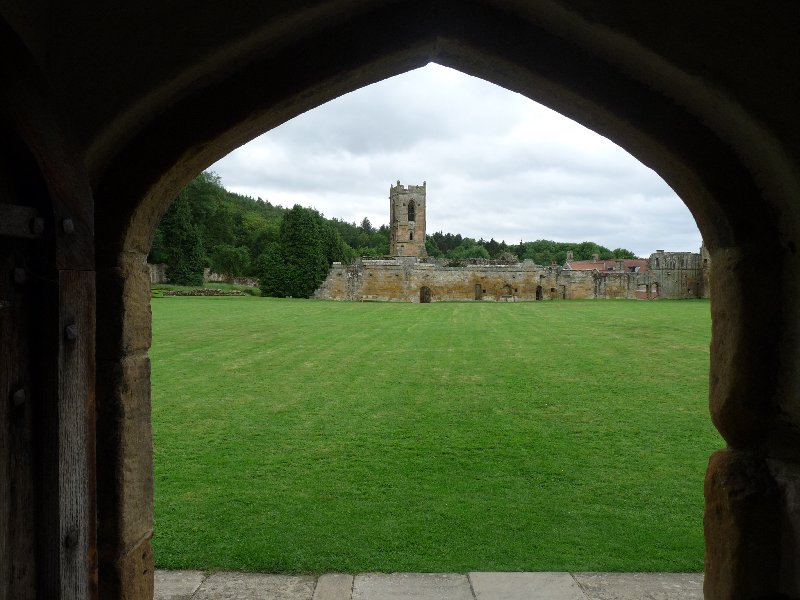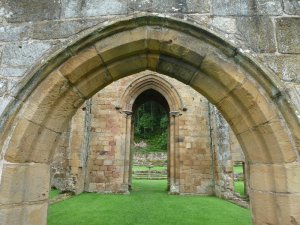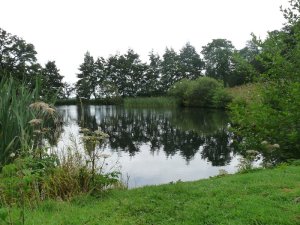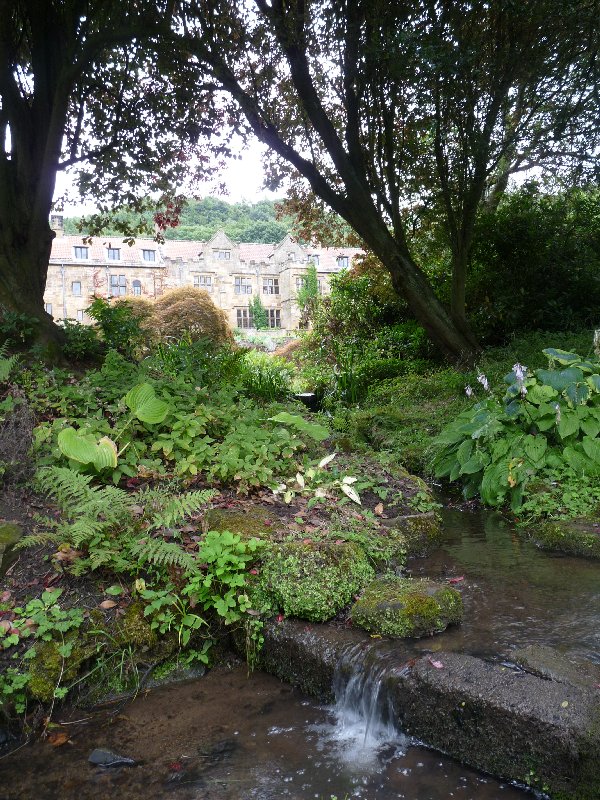
As you travel round North Yorkshire, you quickly become aware of its Christian heritage, and realise how many abbeys and monasteries there were, from a variety of religious foundations, for Henry VIII to get his teeth into once he’d laid his plans for the Dissolution of the Monasteries in the 1530s.
Fountains Abbey, as I mentioned in a recent post, is just down the road, and Jervaulx and Rievaulx aren’t far away: there are at least a dozen more. And each of them is ruined, left waste after Henry VIII pensioned off or martyred the abbots, priors, monks and lay brothers, and all the equivalent females too.
Today we visited Mount Grace Priory near Osmotherly. We’re accustomed to making a tour, when we visit these religious sites, of chapels, refectories, kitchens, cloisters – places where monks or nuns and lay brothers or sisters gathered together in spiritual or physical work for the benefit of their own and perhaps the wider community.
Not so at Mount Grace. This community was a Carthusian foundation. The Carthusians developed their order as a reaction to the lax conditions tolerated by many other religious orders at the time – the late 11th century. Initially centred on Chartreuse near Grenoble, the order founded religious houses throughout Europe, reaching Mount Grace in the later 14th century.

Seven years is the time it took to become a full Carthusian monk. Seven years in which to decide whether the full religious life of solitary prayer, contemplation and work was for you. Seven years in which you would only ever see your fellow monks on a Sunday, at Chapter meeting. For the rest of the time you lived completely alone in your own little house which gave onto the large Great Cloister. Here you had a room in which to sleep and pray at the proper appointed times, a small living area with a large hearth, and upstairs, a room where you would work. Perhaps you would weave, or write out or illustrate manuscripts. Sometimes you would grow vegetables or fruit and herbs in your little patch of garden. You might walk or meditate in your very own mini-cloister. Even mealtimes were solitary. Your (vegetarian) food for your twice-daily meals would be pushed through a space in the wall by a lay brother whom you never saw. Bedtime was 6.00 p.m. and there were two extended times of prayer through the night. What you also had, though, extraordinary for medieval times, was a privy regularly flushed from springs in the area, and cold piped running water.
The monastery site includes a prison to confine brothers who became disobedient. At a time when mental illness was little understood, surely some must have reacted badly to this life of extreme solitude, and become ‘problems’? Any yet there were always far more men wanting one of the 25 places at this austerely- run yet comfortable priory than could be accommodated.
The lay brothers who did much of the ‘housekeeping’ led similarly solitary lives, as far as their working day permitted. They farmed, made domestic pottery ware, looked after working animals, and the fish ponds: fish were apparently sometimes served as part of a vegetarian diet.

Naturally women were never permitted on site. Both male and female pilgrims would stay in what is now the Manor House from time to time, as monasteries have always had an obligation to offer shelter to travellers.
Since the Dissolution, the priory and its surroundings have been abandoned and fallen into ruin. The surrounding farmland was sold off, and the Manor House was converted and adapted for family life at various times in both the 17th and 19th centuries. The refitting of the house in the popular Arts and Crafts style at the turn of the 20th century deserves a post of its own.
Mount Grace is a lovely site. Malcolm and I were happy to visit it together, to have the chance to talk to informative and enthusiastic staff, and to wander around at our leisure. Living there for an entire adult life, under strict Carthusian rule? Not a chance.







thanks for that lot of information – great spiritual area, approaching the one you lived in the Ariège….. – back to the roots….annaxxx
LikeLike
Lovely post. It’s not difficult to understand the attraction of a monastic and safe life in those dark times.
LikeLike
Yes, but I’d have had to have chosen one of the less challenging orders, I think. And your talents as a food photographer might have gone largely wasted. Bean stew anyone?
LikeLike
I have to say that, right at this moment, this life sounds pretty appealing to me. I’d probably change my mind pretty soon, though. Your photos give the place a warm, homey look that would probably fade on cold, rainy days . . .
LikeLike
Cosiness may not have been too much of a problem, but I think constant solitude could be quite challenging.
LikeLike
You didn’t seen any of the famous Mount Grace stoats then?
LikeLike
Nope. Never heard of them.
LikeLike
Some beautiful photos – especially the last one! I always wonder what the ‘office politics’ would have been like in these small insular sects…interesting post.
LikeLike
I wonder if they could even have any ‘office politics’ with that silent and highly disciplined life? It would be good to know.
LikeLike
I was surprised at the spaciousness of the accommodation, and loved the simplicity of it all. I hadn’t thought about the monks life outside of praying, gardening etc. but these seemed to have lived quite creative lives.
LikeLike
You couod afford to be creative with all those hours in the day alone with your thoughts, I guess.
LikeLike
Lovely photos. For anyone beginning to think that this might be appealing I suggest visiting in late November or January! This is not the first monastic order to be a reaction against the laxness of what went before and I am sure office politics existed. I don’t believe people really change and a thousand years is not long in terms of the evolution of the species.
LikeLike
Oh, quite. And had I been a monk…. no, make that a nun, I don’t think I could have quite made the mark as a Cistercian, despite that log fire.
LikeLike